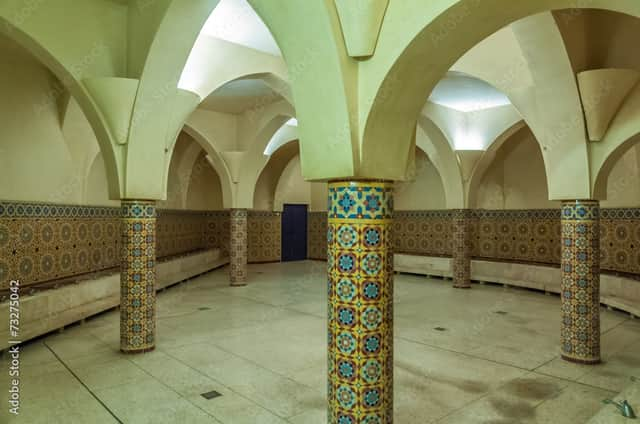In praise of hammams: the ancient spa ritual is more than a body treatment - it's almost a spiritual cleansing


In praise of... is a weekly Travel feature in which NationalWorld writers extol the virtues of a particular aspect of adventuring. From the idiosyncratic, divisive, or sometimes just plain quotidian - these are the things we love to do on our holidays.
When Dave Gahan crooned "clean, the cleanest I've been/An end to the tears and the in-between years/And the troubles I've seen/Now that I'm clean", I might argue he wasn't talking about kicking the skank (he once overdosed on a speedball - the cocaine/heroin cocktail that killed River Phoenix) but the feeling one gets emerging from a hammam. Far beyond a simple ablution, an experience in a hammam feels primal, revivifying. It straddles pain and pleasure to leave you physically fresh and tended to, and sends your brain on a gentle trip.
What is a hammam?
Oh, lordy, for those of us who enjoy heat, it's steamy heaven. In essence its a public bath house (not the saucy kind), particularly prominent within the Muslim world - they're strewn across Turkey, North Africa, and Iran. Descended from a tradition established in the Roman Empire 2000 years ago, with the Roman thermae, hammams feature a series of steamy bathing rooms set at different temperatures.
Advertisement
Hide AdAdvertisement
Hide AdThe heat and steam is generated by water heated in furnaces hotter than Hades under marble floors of the baths, channelled through special chambers under the floors and in the walls. By mooching in a beatific, soporific mode from room to room your circulation is stimulated. In each chamber, you can slather yourself (or, better yet, be slathered upon) with savon noir (a black soap made with the oil and macerated pulp of black olives), mud, tinctures, honey, or oils to clean your body, before scraping it off or being water-boarded to alertness: primped, preened, cleaned. In Moroccan culture, the fires that heat the hammams are called farnatchi - at public hammams, women will often drop off food such as the tangia to be left to cook in the farnatchi while they marinate in the steam for a few hours. A spa treatment followed by a ready-to-eat meal: what fabulous effieciency.
Of course, the etiquette and traditions of a hammam vary wildly from country to country, region to region, so, as ever with In Praise Of, don't consider this an authoritative take, but rather a song of celebration. We could digress to discussing Swedish sauna, Iranian baths or the Germanic Aufguss tradition. But let me, instead, tell the story of my last hammam experience: one of those transcendent travel experiences that leave you freshly in love with the world.
The hammams of Marrakech
Most hammams in Morocco are communal spaces, cheap as buttons to enter. In these public spaces, friends and family scrub one another, or you can pay a bath attendant (tebbaya) for the ablution. Not to sound a cultural naïf, but I didn't head to one of these, for fear of being an interloper in a place where societies come together to connect.
In Morocco, regardless of your social strata, everyone attends the hammam once a week. Thursday and Friday are the most popular days, ahead of Friday prayers. It's a social outing: families along together, for at least a two or three hour session. Woman and men are separated, as per Islamic tradition.
It used to be that the hammam was one of the few places women could congregate, making the weekly trip an important time for communing with their friends. To this day, it's the site of many important rituals: pre-wedding or post-pregnancy bath. (It used to be mothers would use the hammam to try and find a wife for their sons). Performing the scrub for one another is considered an expression of habibi (love).
Instead, I went to a private hammam, paying over the odds to be given a treatment. There, I stepped into a steam room, and was stripped down to all but a paper thong (this seemed to be there for psychological reasons, as it did absolutely nothing to protect my ‘modesty.’) Such measures are considerate though: there is something about people appreciating you're in a physically vulnerable position, and attempting to ameliorate, that is comforting, even if - to quote Patrick Stewart - they could see everything.
Advertisement
Hide AdAdvertisement
Hide Ad

Then a woman of indeterminate age, with (entirely fairly) no English, entered. Cheerful in a brusque manner. She pulled me standing, before commencing to brush me with a hard-surfaced sponge, sloughing off a layer of reptilian skin, battered and bruised from the African sun. Next came clay, a black scrub she efficiently applied to my entire body. She seemed to take extra time over my breasts and buttocks, though perhaps that’s just because (apart from a selection of, I like to think, desperately privileged men, in their time)- no one touches those, so the foreignness of anyone grasping them stands out.
When they slather you with 'mud' in a Morrocan hammam, its no ordinary dirt. Rhassoul is a saponiferous clay excavated from the Middle Atlas mountain range, then mixed with various aromatic plants (rose petals, cloves, eucalyptus, lichens and chamomile, for example). Diluted into a liquid paste with water, it's smeared across your body and hair. Rhassoul is rich in mineral salts, which tighten pores, and regulate the secretion of sebum. There's talk of it 'drawing toxins' from your skin, if you believe in that malarkey. Once it is rinsed off, it is followed by an orange-flower water or lemon juice skin tonic.
This is making me sound very prudish, but quite the contrary: I liked the unfamiliar intimacy of being effectively nude and roughly cleaned by a jolly stranger, with no sexual pretext. Once the clay was liberally applied all over my body, I was invited to lie down on a marble slab, slick with steam, and stew, solitary, for fifteen minutes. It swiftly devolves from pleasant to oppressive. I felt my pride activating - I can handle this, I am a sophisticate, I can endure a little boiling steam. But when my matronly companion re-entered the room I was absolutely delighted.
Out came the hose, the cold water. Of course - as with everything - the clay was washed off by the woman with a workmanlike speed, hands expert but with no thought to pressure. It was the first time anyone else has bathed me since I was a baby, and therein I suspect lies the appeal: an almost Biblical ritual, an act of beneficence and bodily care, an elemental kindness. Leaving the hammam, I felt slowed down, centred, grateful for the habibi of strangers (the fact that my skin was vellum was a lovely boon, too).
My last trip to a hammam was March 12, 2020, in Marrakech. I flew back to the UK to have find the world shut down around me. In those peculiar months, when we were divested from the comfort of physical touch from our friends and loved ones, I thought often of the magic of the hammam. Of the generosity of friends washing one another, of the immediate comfort of bathing rituals. If may not be for you, I appreciate. But to go back to Dave Gahan, "I don't advise and I don't criticize/I just know what I like with my own eyes." It will, I suspect, leave you the cleanest you've been.
Comment Guidelines
National World encourages reader discussion on our stories. User feedback, insights and back-and-forth exchanges add a rich layer of context to reporting. Please review our Community Guidelines before commenting.
